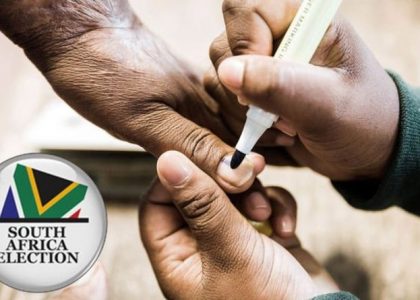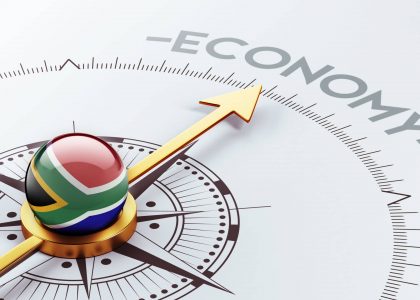Get ready for another critical interest rate decision in South Africa. As the financial world hangs in anticipation, this article offers valuable insights and analysis on what to expect from the upcoming announcement. The South African Reserve Bank (SARB) will make its next interest rate decision on Thursday, September 21st at 13:00 GMT.
The decisions made by the SARB’s Monetary Policy Committee (MPC) regarding the interest rate have far-reaching implications for consumers, businesses, and the overall economy. We dive deep into the factors influencing the decision-making process and provide expert commentary on how this could impact the next interest rate decision.
Current Interest Rate Landscape
SARB held fire in July: During its meeting in July, the MPC of the SARB decided to maintain the repurchase rate unchanged at 8.25%. This decision came after a 50 basis point increase in May and met market analysts’ expectations. However, it is important to note that the decision was not unanimous, with two out of five committee members voting for a 25 basis point increase.
Reasons behind the hold: The decision to keep the interest rate steady was driven by June’s headline inflation rate falling back within the SARB’s target band of 3-6%. This was the first time since April 2022 that inflation had returned to the target range. Furthermore, the SARB downgraded its headline inflation forecasts for 2023 and 2024 to 6% and 5%, respectively. These revised forecasts indicate that average headline inflation is likely to remain within the SARB’s target band in the second half of 2023, providing some room for the bank to hold rates steady.
Inflation Outlook (Factors Influencing Inflation)
Producer Inflation Eases: The Producer Price Inflation (PPI) serves as a leading indicator for the Consumer Price Index (CPI). When prices rise for producers, as is tracked by the PPI, they tend to pass on those costs to consumers, as is tracked by the CPI. South Africa’s annual Producer Price Inflation (PPI) eased significantly to 2.7% in July 2023, down from 4.8% in the previous month.
This reading as shown in the chart below, is the softest since October 2020 and can be attributed to a decline in prices of coke, petroleum, chemical, rubber, and plastic products. Notably, coal and petroleum products experienced a substantial decrease in prices. Additionally, costs slowed down for food products, beverages, tobacco products, paper and printed products, non-metallic mineral products, transport equipment, and furniture and other manufacturing.
South Africa’s Producer Prices Change
Expected Lower Inflation: The latest CPI numbers subsequently improved and inflation is expected to remain within the SARB’s target band in the second half of 2023. South Africa’s annual inflation rate fell further to a two-year low of 4.7% in July 2023, from June’s 5.4% and below market forecasts of 5%, moving further within the central bank’s target range of 3%-6%. However, it is important to note that we are not yet out of the woods as there were price increases on items such as housing & utilities, especially electricity, as municipalities have raised electricity tariffs by more than 18%, effective July.
South Africa’s Inflation Rate
Job Creation Shows Resilience: Despite weak economic growth caused by electricity load-shedding and supply chain disruptions, South African employment experienced a significant increase of 784,000 jobs (5.0%) in the year ending 2023Q2. This surge in employment reflects the growing resilience of private businesses against the negative impacts of electricity outages. Moreover, with Operation Vulindlela monitoring a pipeline of 10,000 MW in private sector energy generation projects, the business activity and economic growth outlook for 2024 appears positive.
Upgraded GDP Growth Forecast: In line with the positive employment trends, the SARB has upgraded its GDP growth forecast for 2023. The bank now expects a 0.4% expansion, up from the previous estimate of 0.3%. However, it is important to note that energy and logistical constraints continue to limit economic activity and increase costs. The growth forecast for 2024 and 2025 remains steady at 1.0% and 1.1%, respectively.
Cloudy Consumer Sentiment: Consumer welfare plays a crucial role in the South African economy, accounting for approximately 83% of the country’s GDP. Negative consumer sentiment has been influenced by various factors, including a decline in real household income and frequent electricity load-shedding. These challenges have contributed to a decline in consumer buying power. However, amidst the prevailing challenges, there are also positive macroeconomic indicators that provide a glimmer of hope for the consumer economy.
Future Policy Moves
The current and future direction of South Africa’s interest rates is influenced by several key factors, including inflation, employment, economic growth, and consumer sentiment. Despite the challenges posed by electricity load-shedding and supply chain disruptions, the South African Reserve Bank has taken steps to maintain price stability and anchor inflation expectations.
While the recent hold on interest rates may not indicate the end of the tightening cycle, the prospects of job creation, improved GDP growth forecasts, and consumers’ willingness to pay more for sustainably produced goods provide some positive indications for the consumer economy. As we navigate the complexities of the global economic landscape, understanding and analyzing these factors is crucial in shaping the future trajectory of South Africa’s interest rates and its overall economic well-being. Thus, the SARB is likely to exercise caution and maintain the repurchase rate unchanged at 8.25%. This is despite many depressed consumers hoping for a cut in interest rates.
To conclude, Lullu Krugel, PwC South Africa Chief Economist said “The next step in the interest rate cycle will then most likely be a reduction in the repo rate as inflation abates further. We believe this is likely to start around the middle of next year pending — as the SARB has often said — favourable data and risk developments. We do not anticipate interest rates to come down again to the low levels seen in 2020. Instead, it is likely that two percentage points could be shaved off towards the end of 2025. That would bring the repo rate back to pre-pandemic levels and support household spending.”
Sources: FocusEconomics PWC TradingEconomics1 TradingEconomics2 TradingEconomics3



